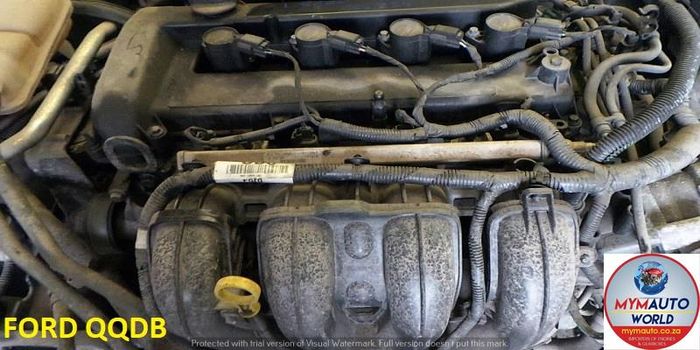Opel Corsa Engine: Everything You Need to Know Prior To Buying
Opel Corsa Engine: Everything You Need to Know Prior To Buying
Blog Article
Thorough Evaluation of the Mechanical Parts of a Hatchback's Motor
Recognizing the complex workings of a hatchback's electric motor is similar to unraveling an intricate puzzle where every item plays a vital role in the total performance of the lorry. opel corsa engine. From the synchronized activities of cyndrical tubes and pistons to the specific timing of camshafts and crankshafts, each component operates in consistency to power the car. What genuinely establishes an electric motor apart exists in the better details - the fragile dancing of shutoffs and timing belts, the exact distribution of gas with injectors, and the trigger that sparks it all through stimulate plugs. As we delve into the internal functions of these mechanical wonders, a much deeper gratitude for the symphony of parts that drive a hatchback forward arises.
Pistons and Cylinders

The efficiency and efficiency of a hatchback's engine depend heavily on the smooth operation of the cyndrical tubes and pistons. Regular maintenance and monitoring of these components are essential to make certain optimum engine performance and durability.
Camshafts and Crankshafts
Camshafts and crankshafts play vital functions in the operation of a hatchback's internal combustion engine, facilitating specific timing and conversion of direct activity into rotational power. The camshaft, located within the engine block, manages the opening and closing of the engine shutoffs at details intervals. As the camshaft rotates, its wattles press versus the shutoffs, allowing air and fuel right into the burning chamber and expelling exhaust gases. This procedure integrates with the movement of the pistons to make sure optimum engine efficiency.
On the other hand, the crankshaft, linked to the pistons by means of attaching rods, transforms the direct activity of the pistons into rotational activity. This rotational power is after that moved to the transmission and ultimately to the wheels, driving the automobile forward. The specific sychronisation in between the camshaft and crankshaft is necessary for the engine to operate effectively and create power effectively. Any kind of misalignment or breakdown in these components can result in engine performance issues and Discover More possible damage. As a result, regular maintenance and prompt replacements are necessary to make sure the smooth procedure of these essential engine elements in a hatchback.
Shutoffs and Timing Belts
Playing a vital role in the synchronization and procedure of a hatchback's inner combustion engine, the shutoffs and timing belts operate in conjunction with the camshafts and crankshafts to ensure optimum performance. Shutoffs control the circulation of air and fuel into the combustion chamber while eliminating exhaust gases. The timing belt, additionally known as the camera belt, synchronizes the turning of the camshaft and crankshaft, making certain that the shutoffs open and close at the appropriate times in regard to the piston setting. Correct timing is critical for the engine to work effectively and prevent damage because of disturbance in between moving components.

Fuel Injectors and Trigger Plugs
Fuel injectors and stimulate plugs are vital components in a hatchback's engine system, accountable for the reliable delivery of gas and ignition of the air-fuel combination. Modern hatchbacks typically utilize digital gas injection systems that can adjust fuel shipment based on numerous aspects such as engine temperature, lots, and speed.
Along with fuel injectors, stimulate plugs are essential for igniting the air-fuel mix within the engine you could look here cylinders. When the spark plug creates a high-voltage electrical current, it creates a stimulate that stirs up the compressed air-fuel mixture, launching the burning process. Correctly working ignition system are important for engine performance, fuel performance, and emissions regulate. Normal examination and upkeep of both gas injectors and ignition system are vital to make certain the engine runs efficiently and efficiently.
Air Conditioning System and Lubrication
Offered the critical role of preserving optimum engine performance and efficiency in a hatchback, the air conditioning system and lubrication devices are integral parts that guarantee correct working and longevity of the automobile. The lubrication system in a hatchback includes the oil pump, oil filter, and various lubes that lower friction within the engine. Together, the cooling system and lubrication systems play a vital duty in keeping the hatchback's engine running efficiently and effectively.
Conclusion

Pistons and cyndrical tubes are essential parts within the internal burning engine of a hatchback, responsible for transforming fuel into mechanical power. The camshaft, located within the engine block, manages the opening and closing of the engine valves at details periods.Playing a critical function in the synchronization and operation of a hatchback's inner combustion engine, the shutoffs and timing belts function in conjunction with the camshafts and crankshafts to make sure optimal efficiency.Fuel injectors and trigger plugs are important components in a hatchback's engine system, responsible for the reliable delivery of fuel and ignition of the air-fuel combination. Modern hatchbacks usually utilize electronic fuel injection systems that can readjust gas shipment based on numerous factors such as engine rate, load, and temperature.
Report this page